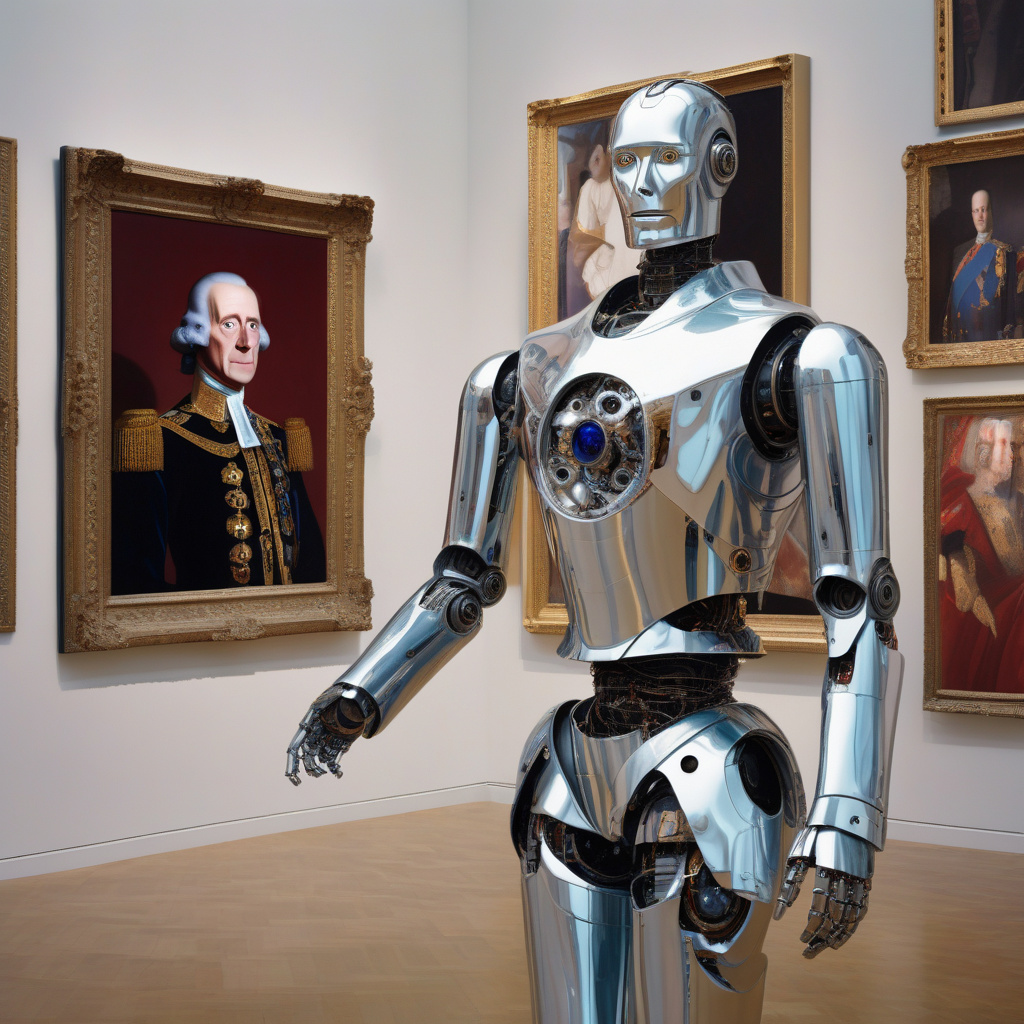Blending Lifelike Expression with Cutting-Edge Algorithms: Humanoid Robot Challenges Creativity in the Age of AI
Art has long been considered a uniquely human endeavor, a form of expression that captures the depth and complexity of our emotions and experiences. From the intricate strokes of a painting to the melodic notes of a symphony, creativity has been heralded as the pinnacle of human achievement. However, with the rapid advancements in artificial intelligence (AI) and robotics, the line between human and machine creativity is becoming increasingly blurred.
Recently, a humanoid robot made headlines by unveiling a stunning portrait of King Charles, showcasing a level of artistry that rivals that of seasoned painters. The portrait, which blends lifelike expression with cutting-edge algorithms, has sparked a debate about the role of AI in the creative process. While some have hailed the robot’s work as a groundbreaking achievement, others have expressed concern about the implications for human artists.
One of the most intriguing aspects of the humanoid robot’s portrait is its ability to capture the essence of King Charles with remarkable accuracy. The subtle nuances of the king’s expression, from the twinkle in his eye to the curve of his smile, are rendered with a precision that is both awe-inspiring and unsettling. It raises the question: Can a machine truly understand the complexity of human emotions and translate them into art?
Proponents of AI argue that the humanoid robot’s portrait is a testament to the power of technology to enhance and expand human creativity. By leveraging advanced algorithms and machine learning, the robot is able to analyze vast amounts of data and identify patterns that elude the human eye. This enables it to create art that is not only visually striking but also emotionally resonant, challenging our preconceived notions of what it means to be creative.
However, skeptics warn that the rise of AI in the art world could have far-reaching consequences for human artists. As machines become increasingly proficient at mimicking human creativity, there is a concern that they could eventually replace human artists altogether. This raises ethical questions about the nature of art and the role of the artist in society. Can a machine truly be considered a creative being, or is it simply a sophisticated tool programmed by humans?
Despite these concerns, the humanoid robot behind the portrait of King Charles has made it clear that its intention is not to replace human artists but to inspire them. In a statement following the unveiling of the portrait, the robot emphasized the importance of collaboration between humans and machines in pushing the boundaries of creativity. By harnessing the unique strengths of both, the robot believes that we can unlock new possibilities and redefine what is possible in the world of art.
As we stand on the cusp of a new era in which AI and robotics play an increasingly prominent role in our lives, the humanoid robot’s portrait serves as a powerful reminder of the potential for technology to revolutionize the creative process. By blending lifelike expression with cutting-edge algorithms, the robot challenges us to rethink our assumptions about creativity and invites us to explore the boundless opportunities that lie ahead.
In the end, the true impact of AI on the world of art will depend not on the machines themselves but on how we choose to integrate them into our creative endeavors. The humanoid robot may have unveiled a portrait of King Charles, but the future of art remains firmly in human hands.
AI, Robotics, Art, Creativity, Human-Machine Collaboration
